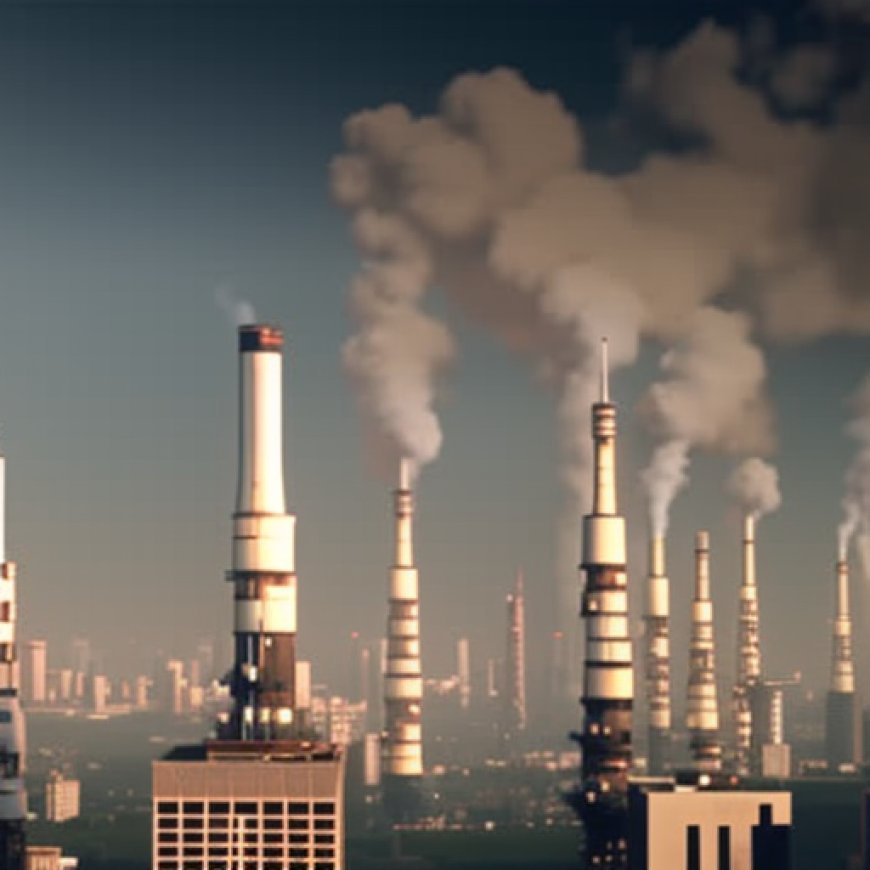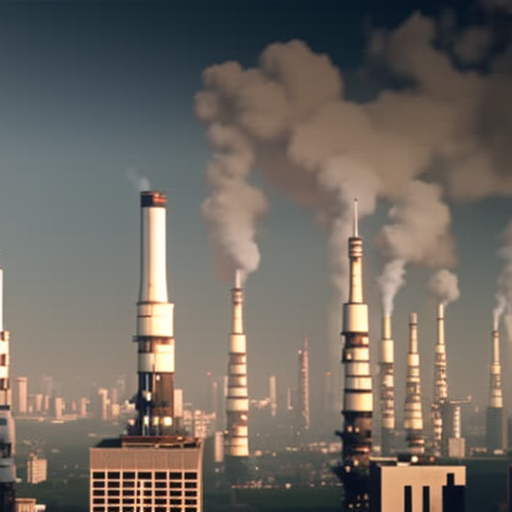30 Most Air Polluted Countries in the World
30 Most Air Polluted Countries in the World Yahoo Finance


30 Most Air Polluted Countries in the World
In this report, we will be examining the 30 most air polluted countries in the world. Air pollution is a significant challenge to the environment and public health, resulting in billions of dollars lost each year in productivity, healthcare costs, and property damage. Furthermore, air pollution plays a significant role in global warming, as pollutants released into the atmosphere trap heat, leading to a warmer planet. The destruction of plants and trees, which absorb carbon dioxide, exacerbates this issue.
According to a report by the International Energy Agency, global carbon dioxide (CO2) emissions reached a new all-time high of 36.8 gigatons in 2022, representing a 0.9% increase from the previous year. Additionally, a study by Climate Central revealed that around 98% of the world’s population experienced higher temperatures due to human-induced climate change from June to August. The summer of 2023 was the hottest on record, resulting in devastating wildfires and increased mortality rates.
Business and the Fight Against Climate Change
Governments worldwide are increasingly focused on reducing carbon emissions. The US Environmental Protection Agency recently introduced two measures to reduce climate-warming chemicals in air conditioners and refrigerators, aligning with the country’s goal of halving greenhouse gas emissions by the end of the decade. Companies are also joining the fight against climate change by investing in carbon dioxide removal (CDR) technologies. Microsoft Corporation and Shopify Inc. are among the major businesses investing heavily in CDR technologies. The US government has also allocated funds to build direct air capture facilities.
The demand for carbon removals is growing, with JPMorgan Chase & Co. and Microsoft Corporation purchasing significant amounts of carbon removals. Amazon.com, Inc., one of the largest companies in the world, has invested in direct air capture technology to achieve its net zero carbon emissions target by 2040. These efforts demonstrate that businesses and governments are taking climate change seriously.
30 Most Air Polluted Countries in the World
-
Vietnam
Annual Average PM2.5 Concentration (μg/m³): 27.2
Vietnam experiences poor air quality due to urbanization, crop burning, construction dust, and vehicular emissions.
-
Laos
Annual Average PM2.5 Concentration (μg/m³): 27.6
Air pollution in Laos is primarily caused by waste burning, scrubland burning, land clearing, and dust and sand.
-
Mongolia
Annual Average PM2.5 Concentration (μg/m³): 29.5
Urbanization and the use of coal-burning stoves contribute to air pollution in Mongolia.
-
Ghana
Annual Average PM2.5 Concentration (μg/m³): 30.2
Poor waste management, solid fuel combustion, vehicle emissions, and dust are major sources of air pollution in Ghana.
-
Indonesia
Annual Average PM2.5 Concentration (μg/m³): 30.4
Factories, coal-fired power plants, and traffic congestion contribute to Indonesia’s poor air quality.
… (continued)
SDGs, Targets, and Indicators
-
SDG 3: Good Health and Well-being
- Target 3.9: By 2030, substantially reduce the number of deaths and illnesses from hazardous chemicals and air, water, and soil pollution and contamination.
- Indicator: Annual average measured concentration of particulate matter (PM2.5) in the air.
-
SDG 7: Affordable and Clean Energy
- Target 7.2: By 2030, increase substantially the share of renewable energy in the global energy mix.
- Indicator: Share of renewable energy in the global energy mix.
-
SDG 9: Industry, Innovation, and Infrastructure
- Target 9.4: By 2030, upgrade infrastructure and retrofit industries to make them sustainable, with increased resource-use efficiency and greater adoption of clean and environmentally sound technologies and industrial processes.
- Indicator: CO2 emissions from energy combustion and industrial processes.
-
SDG 11: Sustainable Cities and Communities
- Target 11.6: By 2030, reduce the adverse per capita environmental impact of cities, including by paying special attention to air quality and municipal and other waste management.
- Indicator: Annual average measured concentration of particulate matter (PM2.5) in the air.
-
SDG 13: Climate Action
- Target 13.1: Strengthen resilience and adaptive capacity to climate-related hazards and natural disasters in all countries.
- Indicator: Global carbon dioxide (CO2) emissions from energy combustion and industrial processes.
-
SDG 17: Partnerships for the Goals
- Target 17.17: Encourage and promote effective public, public-private, and civil society partnerships, building on the experience and resourcing strategies of partnerships.
- Indicator: Investments by big businesses in carbon dioxide removal (CDR) technologies.
Table: SDGs, Targets, and Indicators
| SDGs | Targets | Indicators |
|---|---|---|
| SDG 3: Good Health and Well-being | Target 3.9: By 2030, substantially reduce the number of deaths and illnesses from hazardous chemicals and air, water, and soil pollution and contamination. | Annual average measured concentration of particulate matter (PM2.5) in the air. |
| SDG 7: Affordable and Clean Energy | Target 7.2: By 2030, increase substantially the share of renewable energy in the global energy mix. | Share of renewable energy in the global energy mix. |
| SDG 9: Industry, Innovation, and Infrastructure | Target 9.4: By 2030, upgrade infrastructure and retrofit industries to make them sustainable, with increased resource-use efficiency and greater adoption of clean and environmentally sound technologies and industrial processes. | CO2 emissions from energy combustion and industrial processes. |
| SDG 11: Sustainable Cities and Communities | Target 11.6: By 2030, reduce the adverse per capita environmental impact of cities, including by paying special attention to air quality and municipal and other waste management. | Annual average measured concentration of particulate matter (PM2.5) in the air. |
| SDG 13: Climate Action | Target 13.1: Strengthen resilience and adaptive capacity to climate-related hazards and natural disasters in all countries. | Global carbon dioxide (CO2) emissions from energy combustion and industrial processes. |
| SDG 17: Partnerships for the Goals | Target 17.17: Encourage and promote effective public, public-private, and civil society partnerships, building on the experience and resourcing strategies of partnerships. | Investments by big businesses in carbon dioxide removal (CDR) technologies. |
Analysis
-
Which SDGs are addressed or connected to the issues highlighted in the article?
The issues highlighted in the article are connected to the following SDGs:
- SDG 3: Good Health and Well-being
- SDG 7: Affordable and Clean Energy
- SDG 9: Industry, Innovation, and Infrastructure
- SDG 11: Sustainable Cities and Communities
- SDG 13: Climate Action
- SDG 17: Partnerships for the Goals
-
What specific targets under those SDGs can be identified based on the article’s content?
The specific targets identified based on the article’s content are:
- Target 3.9: By 2030, substantially reduce the number of deaths and illnesses from hazardous chemicals and air, water, and soil pollution and contamination.
- Target 7.2: By 2030, increase substantially the share of renewable energy in the global energy mix.
- Target 9.4: By 2030, upgrade infrastructure and retrofit industries to make them sustainable, with increased resource-use efficiency and greater adoption of clean and environmentally sound technologies and industrial processes.
- Target 11.6: By 2030, reduce the adverse per capita environmental impact of
Behold! This splendid article springs forth from the wellspring of knowledge, shaped by a wondrous proprietary AI technology that delved into a vast ocean of data, illuminating the path towards the Sustainable Development Goals. Remember that all rights are reserved by SDG Investors LLC, empowering us to champion progress together.
Source: finance.yahoo.com

Join us, as fellow seekers of change, on a transformative journey at https://sdgtalks.ai/welcome, where you can become a member and actively contribute to shaping a brighter future.







